Spring Schedule
Dr. Joel Zinn
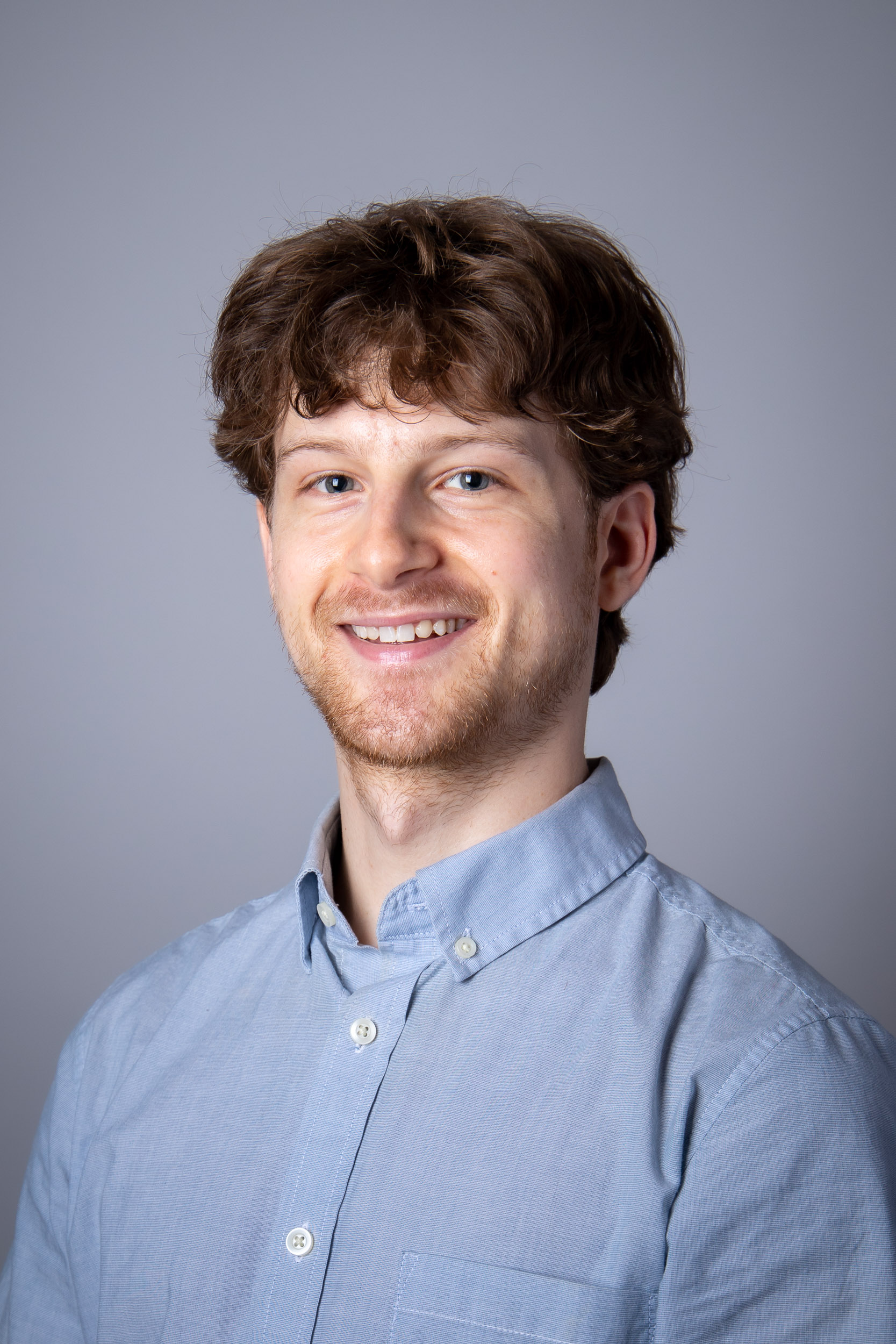
Friday, April 26, 2024
High notes from the study of stellar sound waves
Stars across the Galaxy are constantly making a racket --- including our own Sun. Although we can't hear them through space, we can still detect their sound waves through asteroseismic techniques. As one of the only ways to study the insides of stars, asteroseismology has revolutionized our understanding of the inner workings of our stellar neighbors, near and far. I will discuss the most exciting discoveries from mid-century Southern California beginnings through the space-based era of the last two decades, and ranging from the controversy over the Sun's composition to magnetic fields buried in the cores of far-flung giant stars.
Joel C. Zinn received his PhD from Ohio State University, and completed a postdoctoral appointment at the University of New South Wales and a NSF Astronomy and Astrophysics Postdoctoral Fellowship at the American Museum of Natural History before becoming an Assistant Professor of Physics and Astronomy at California State University, Long Beach. His research is at the intersection of stellar and galactic physics, making use of data from taxpayer-funded NASA space-based missions like Kepler and TESS. He is also interested in the intersection of art and astronomy, having developed dance and theatre curricula for the American Museum of Natural History. At CSULB, Dr. Zinn oversees astronomy outreach activities, including the weekly rooftop observing nights, Nights at the Observatory, and has inaugurated a mobile planetarium program to bring astronomy shows to high schools in the community.
TBD

Friday, May 31, 2024
Past Guests
Dakotah Tyler (Star Kid)
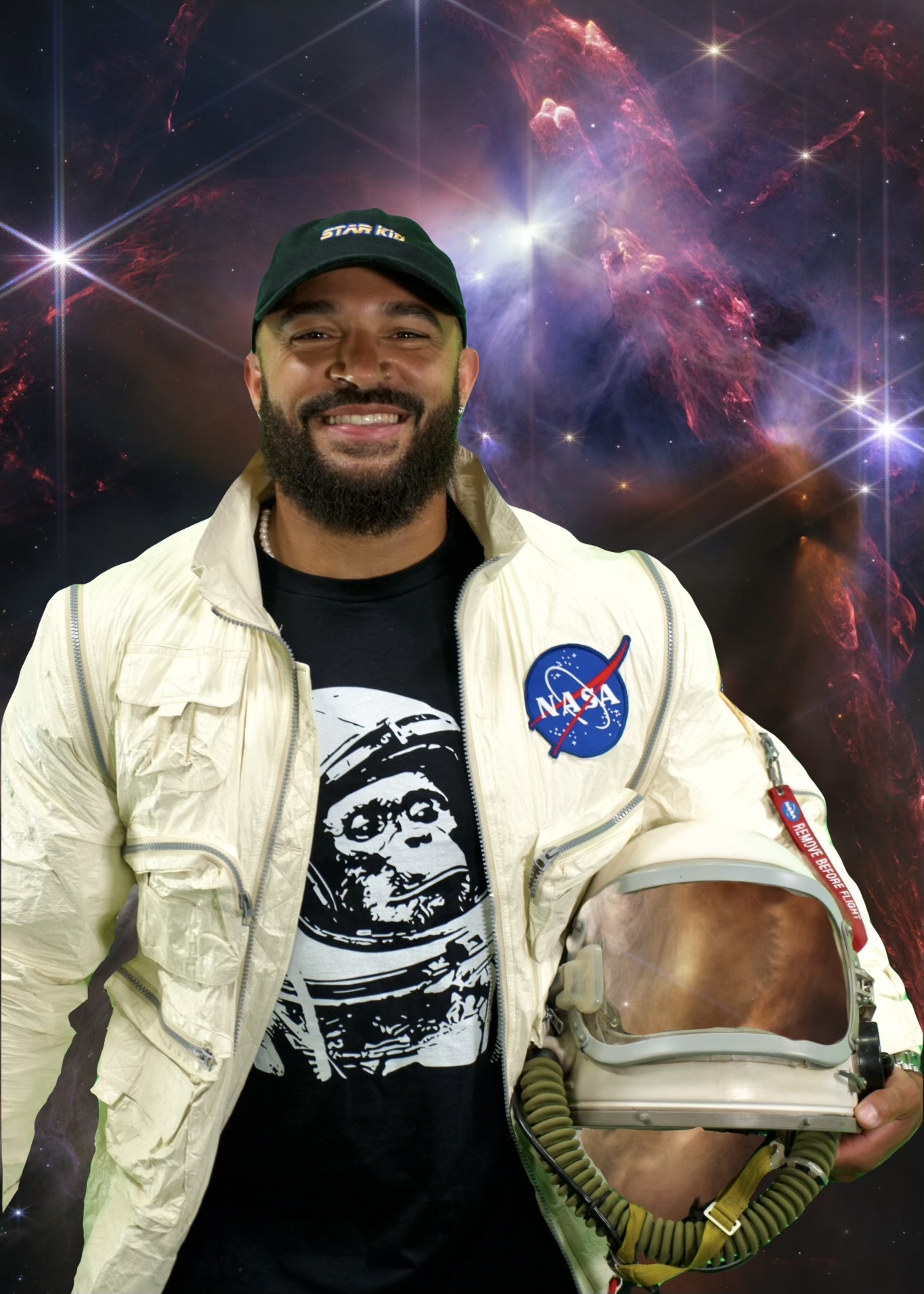
March 29, 2024
From the Gridiron to Galaxies
"From the Gridiron to Galaxies" is an inspiring journey presented by Dakotah Tyler, a former college football athlete turned astrophysicist. This talk traverses Dakotah's unique path from sports to the stars, highlighting his transition into the field of exoplanets. Attendees will embark on an exploration of the ark of discovery of other planets in our galaxy and touch on the latest breakthroughs in our quest to understand the cosmos. Through Dakotah's personal narrative, the presentation will not only shed light on the vast mysteries of the universe but also emphasize the power of resilience, adaptability, and the pursuit of one's true passion.
Dakotah Tyler is an astrophysicist and dedicated science communicator. His research focuses on the dynamic evolution of planets that orbit stars other than the Sun (exoplanets). Before astrophysics, Dakotah was a Division I college football player, but after a career-ending injury, he became fascinated with our expansive universe and decided to pursue a career just to study it. Dakotah is also passionate about sharing the knowledge and wonders of the cosmos with interested audiences of all ages and backgrounds. With over 130,000 followers on TikTok and over 11,000 followers on Instagram, Dakotah is passionate about sharing the knowledge and wonders of the cosmos with interested audiences of all ages and backgrounds.
Dr. Konstantin Batygin
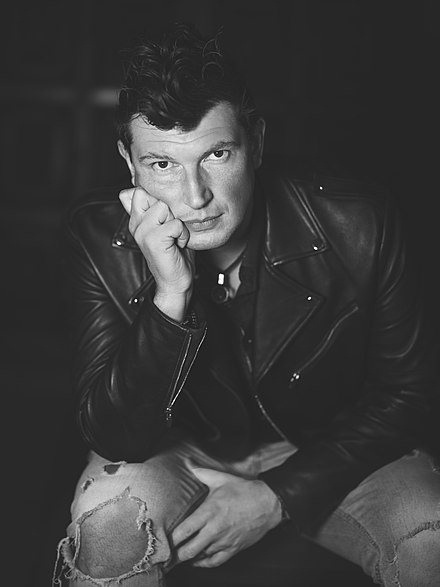
February 23, 2024
Planet 9 From Outer Space: a Status Update
Have you ever looked up at the night sky and wondered what lies beyond the planets we know? For the last 20 years, scientists have been studying a fascinating area in space called the Kuiper Belt - a place filled with icy objects far beyond Neptune. In this mysterious zone, some things don't move as we expect them to. Some of these icy space rocks follow paths that puzzle us and can't be explained just by the influence of the eight planets we are familiar with. One of the most exciting ideas is that there might be a hidden ninth planet, much bigger than Earth, influencing these paths. In this presentation, we will embark on a journey through the evidence that hints at this unseen planet and explore one of the solar system's most intriguing mysteries – the hunt for Planet Nine.
Professor Konstantin Batygin received his bachelor’s degree in Astrophysics from University of California, Santa Cruz in 2008, before pursuing graduate studies in Planetary Science at Caltech and receiving a Ph.D. in 2012. Batygin's research is primarily aimed at understanding the formation and evolution of planetary systems, including our own. Prior to joining the faculty at California Institute of Technology in 2014, Batygin was a postdoctoral scholar at Observatoire de la Côte d'Azur in Nice, France, and Harvard University. When not science-ing, he plays in the rock band The Seventh Season.
Dr. Sabrina Stierwalt
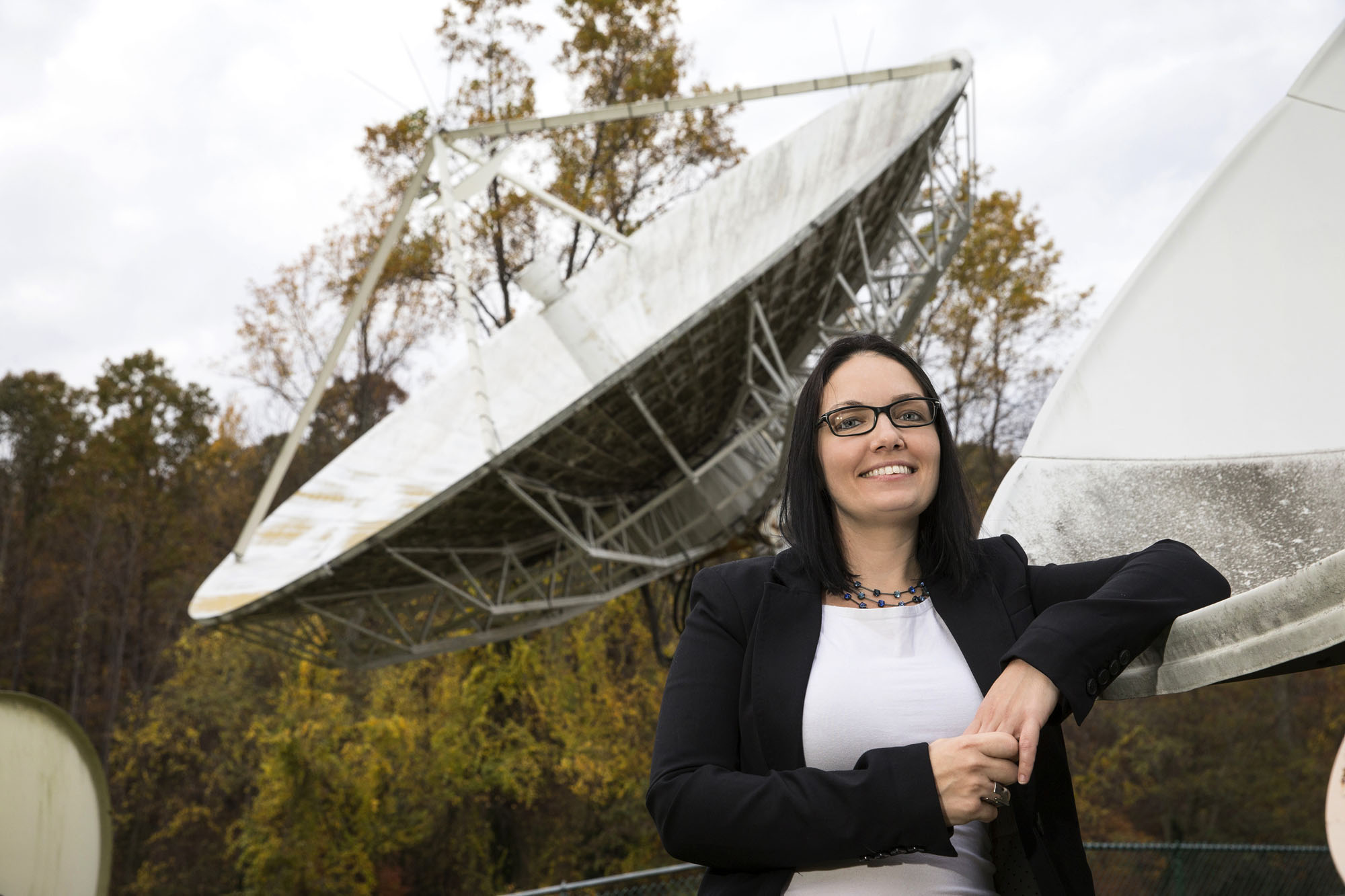
December 1, 2023
Journey to a Black Hole
Escape for an evening with a trip to a black hole. Astrophysicist Sabrina Stierwalt will take us on a tour of the most mysterious objects the universe has to offer. How do we know black holes exist? What would happen if you fell into one? Could a black hole swallow the Earth?
Dr Stierwalt will discuss the latest research, including her own, into how supermassive black holes form, what the biggest black holes look like, and why the universe appears to be missing a population of smaller black holes.
Sabrina is an extragalactic astrophysicist and a professor at Occidental College where she teaches fun courses like quantum mechanics and advanced electricity and magnetism. She researches the physics of galaxy-galaxy collisions which includes the formation of black holes.
Dr. Matt Malkan
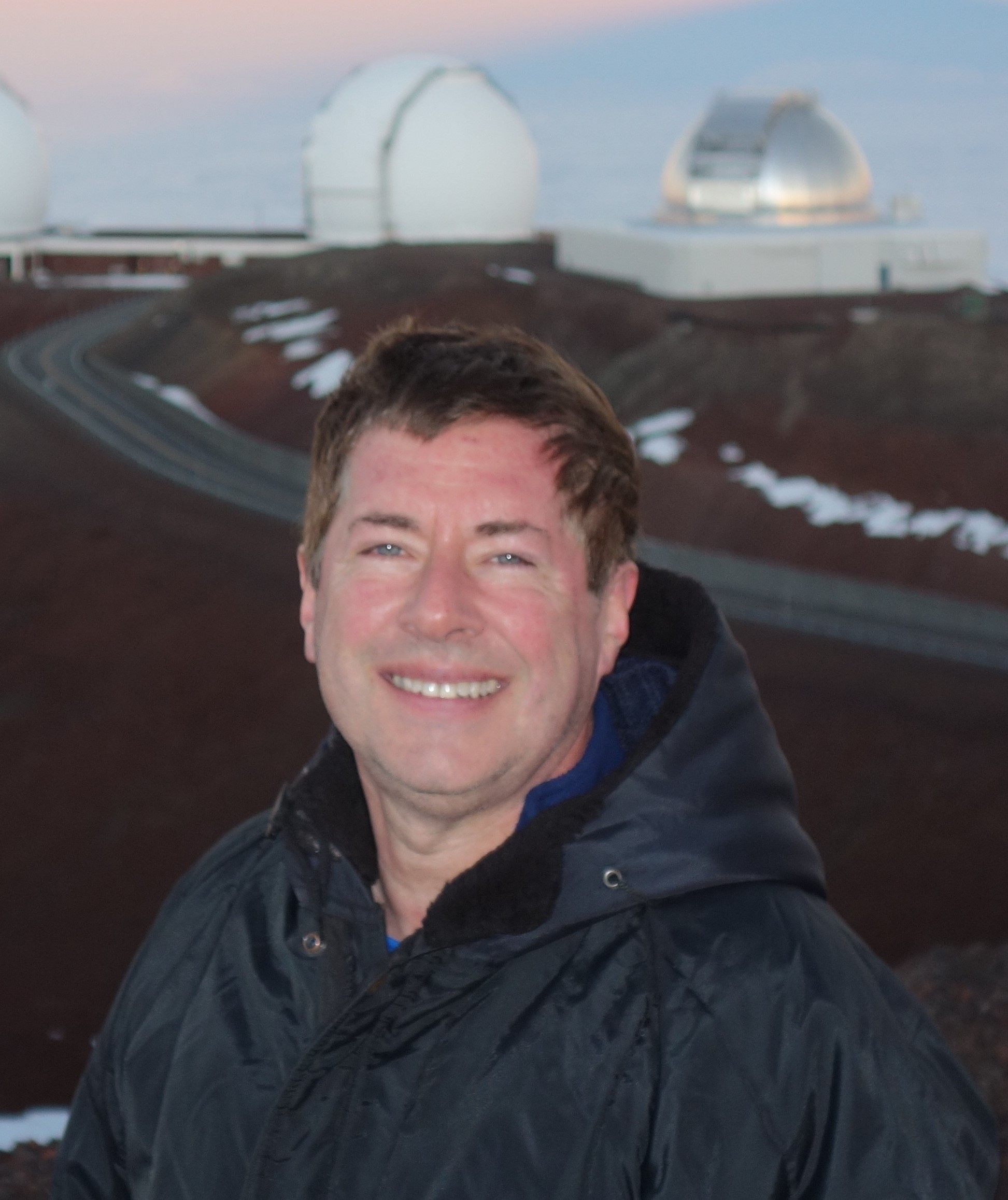
October 27, 2023
What's New in the Young Universe: Latest Surprises from the James Webb Space Telescope
A few hundred thousand years after the epoch of Inflation, our Universe has been measured to be remarkably uniform. Fortunately for our existence, it didn't stay that way for long. The excess gravity of slightly over-dense regions slowed their expansion, and eventually caused them to collapse into the first galaxies, forming the first generation of stars (and planets).
Observing this process was the primary motivation for launching the incredible James Webb Space Telescope--the greatest technical challenge ever faced by NASA. Now operating better than we even hoped for, JWST is in the process of rapidly revolutionizing every aspect of astronomy.
Dr. Malkan will focus on his efforts to use JWST as a cosmic "time machine", measuring light from extremely distant galaxies, which has been traveling to us for 12 billion or more years. We are now able to see these young galaxies lighting up the universe, forming stars, merging together, growing giant black holes, and building up the heavy elements required for life!
Christopher 'Chuie' Huie
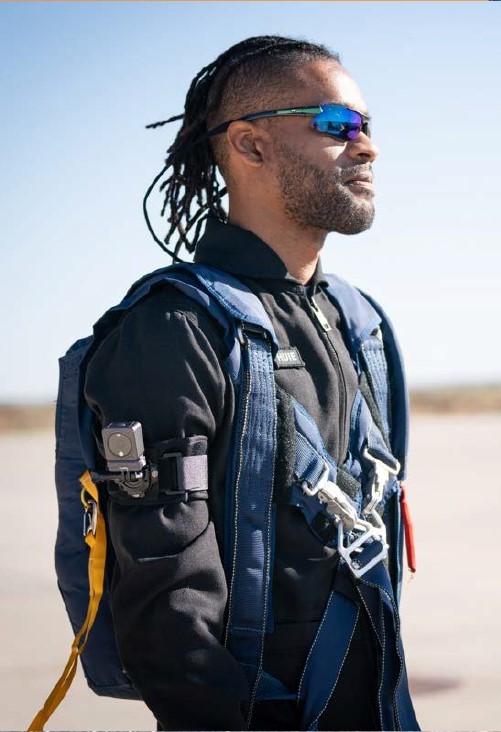
September 29, 2023
In this talk Mr. Huie will recap his contributions to various aerospace industry areas, including rotorcraft, flight simulators, and commercial human spaceflight both as an aerospace engineer and an astronaut. He will provide an overview of the Virgin Galactic Spaceflight experience which he witnessed firsthand as a Mission Specialist on the company's final test flight mission, Unity 25. He will also provide an overview of the Virgin Galactic's Black Leaders in Aerospace Scholarship & Training (BLAST) Program, which aims to increase the number of Black professionals in leadership positions in aerospace.
Christopher Huie, known by his colleagues as “Chuie,” is an astronaut and aerospace engineer. He is the Sr. Manager of Business Insights at Virgin Galactic where he is responsible for Engineering-Business integration and support long range planning by enabling data driven decisions.
Christopher has made substantial technical contributions to the nascent commercial human spaceflight industry. Joining Virgin Galactic in 2016, he led the Flight Sciences External Loads Engineering discipline for 6 years and is intimately familiar with Spaceship VSS Unity and Mothership VMS Eve, which together make up Galactic’s Spaceflight System. He has worked on nearly every component of spaceship and mothership design, helping to ensure both structural integrity and mission success. Christopher’s thoughtful approach to both his work and to those he works with has set him apart as a leader.
On May 25th, 2023 Christopher flew as a Mission Specialist on Unity 25, Virgin Galactic’s final test flight, paving the way for Galactic’s first commercial mission, Galactic 01 in June of 2023. A Jamaican-American, Christopher is among the first 650 humans who have ever been to space and is only the 19th Black astronaut in the world.
Before joining Virgin Galactic, Christopher spent over 5 years at Bell Flight engineering on various rotorcraft programs including the Bell V-280 Tiltrotor and as a Simulation Engineer developing and certifying Flight Crew Training Simulators around the world. Christopher is originally from Orlando, FL and received his B.S. in Aerospace Engineering from the University of Maryland, College Park (UMD). While at UMD, Christopher was a scholar in the QUEST Honors Program, the Igor Sikorsky Scholarship Program (ISSP), and conducted undergraduate research in the Alfred Gessow Rotorcraft Center as part of the National Science Foundation’s LSAMP Undergraduate Research Program. As part of the ISSP, Christopher also completed several internships at Sikorsky Aircraft in Mechanical Diagnostics & Prognostics and Aerodynamics.
In 2022, Christopher was inducted into the inaugural class of the University of Maryland Clark School of Engineering’s Early Career Distinguished Alumni Society, which recognizes alumni under 40 years old for their leadership, innovation, service, and entrepreneurship.
Christopher is the 2021 Together We Can: Change winner, an honor bestowed by Virgin Unite, The Virgin Group’s outreach and philanthropy organization, to those who are working to improve their communities and change the world around them for the better.
Christopher is a science enthusiast and loves inspiring and mentoring the next generation of students interested in Science, Engineering, and Aerospace. He is an active member of Virgin Galactic’s outreach initiative, Galactic Unite, and the Co-Founder and Coordinator for its Black Leaders in Aerospace Scholarship & Training (BLAST) Program, a fellowship program which aims to increase the number of Blacks in leadership positions within the Aerospace Industry. In his free time, Christopher enjoys being a dad to his 1-year-old daughter, learning, reading, plant-based cooking, rocking climbing, DJing, listening to music, Seinfeld reruns, Star Trek, and scheming up crazy space business ideas.
Instagram: @AstroChuie
Prof. David Kirkby and Dylan Green
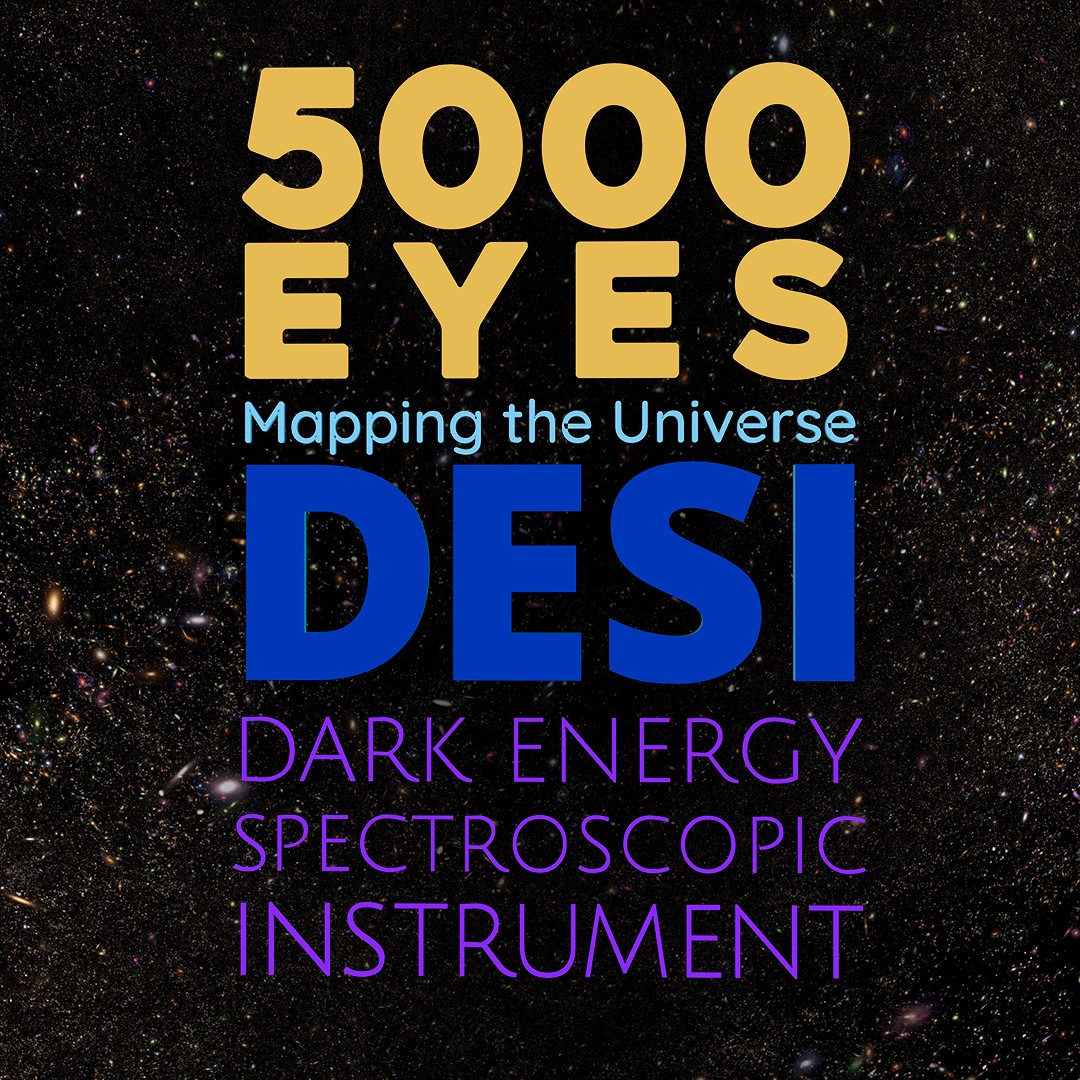
May 26, 2023
Join Professor David Kirkby and Dylan Green from UCI for the OCC premier of the full dome planetarium show 5000 Eyes: Mapping the Universe with DESI and the following lecture! The Dark Energy Spectroscopic Instrument (DESI) consists of 5000 robotic fiber positioners that capture the light from distant galaxies and quasars to measure their distances and build the most accurate 3D map ever of the cosmos. Scientists will use this map to measure how the universe has expanded in the past and learn about the mysterious role of dark energy in accelerating this expansion.
David Kirkby
David lived in England, Canada and France before settling in California and joining the faculty at the University of California, Irvine. He was originally a particle physicist, studying the smallest building blocks of the universe with accelerators at CERN, in Europe, and SLAC, at Stanford University. He now studies the origin and evolution of the universe on the largest scales, with a
particular focus on understanding the cosmic acceleration that drives the universe to expand faster and faster each day. A lot of his day-to-day work involves data analysis, visualization, machine learning and astronomical instrumentation.
Dylan Green
Dylan was born in South Africa before moving to California at the age of 7. He received his Bachelor's of Science at the University of California, Irvine, where he is now completing his PhD in Physics with a concentration in astrophysics. His daily routine includes analyzing data and tweaking machine learning algorithms to improve our understanding of the universe, working for Prof. David Kirkby.
Dr. Steven W. Barwick
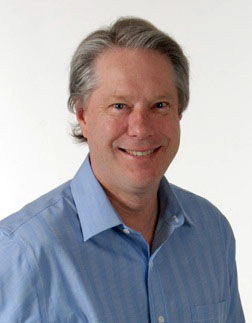
April 21, 2023
In the early 1990's, physicists began to consider the possibility of observing neutrinos from astrophysical sources to complement the traditional tools of astronomy, which relied on the observation of light and other variants of electromagnetic radiation. Being uncharged, neutrinos travel in straight lines (like light!) so they point back to the source that created them, but interact with other matter far more rarely than light. This property gives astrophysicists a unique unobstructed view of the core of powerful sources since neutrinos can escape in many situations where light is trapped. In addition, once neutrinos are made, they will travel freely to us. The downside - neutrinos are very difficult to detect. I will discuss the rise of neutrino astronomy, and then focus on what comes next.
After receiving his Ph.D from UC-Berkeley in 1987, Professor Barwick joined the faculty of the department of physics and astronomy at UC Irvine in 1991. He has participated in experiments flown on massive balloons to measure high energy cosmic rays and antiparticle. For most of his career, he has worked to develop a new astronomy that observes neutrinos. He led the AMANDA project at the South Pole, which was the predecessor to the IceCube high energy neutrino observatory, and the ARIANNA high energy neutrino project, located in Antarctica. He was elected fellow of the American Physical Society in 2002, and currently chairs the Yodh Prize committee, which recognizes the most important contributions to the fields of particle astrophysics and cosmic rays.
Dr. Michael Bouchard
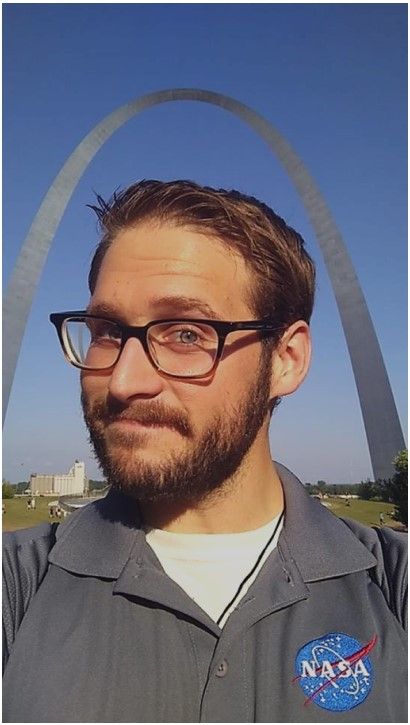
March 24, 2023
People have been studying and charting the planets movements across the sky for thousands of years. Every new advancement in space exploration technology, from telescopes, to space probes, to landers and rovers, uncovers a new face of the red planet. And now we stand poised for our most ambitious attempt yet, to return samples from Mars!
Dr. Michael Bouchard loves two things, rocks and rovers!
Calling St. Louis Missouri home, he began his own journey of discovery camping and hiking across the country with his family and scouts.
Which turned into a love for the outdoors and asking questions about the world around him.
This led him to study Geology and Geophysics at Missouri University of Science Technology.
While there he discovered his other passion, rovers! He knew he wanted to explore other planets as well as Earth, so he started a robotics design team that designs and builds Mars rovers that compete in international competitions.
After his undergrad Michael continued his journey of discovery at Washington University in St. Louis,
where he completed his Masters and PhD in Earth and Planetary Sciences, specializing in Martian geology.
Michael has now worked as both a scientist and engineer on three Mars rovers with
NASA's Jet Propulsion Laboratory including a three-year stint as a member of the science team on the Opportunity rover.
He is currently a Payload Systems Engineer, working on the ambitious and incredibly exciting
Mars Sample Return mission. Which you may just hear something about today!
Emmanuel Masongsong
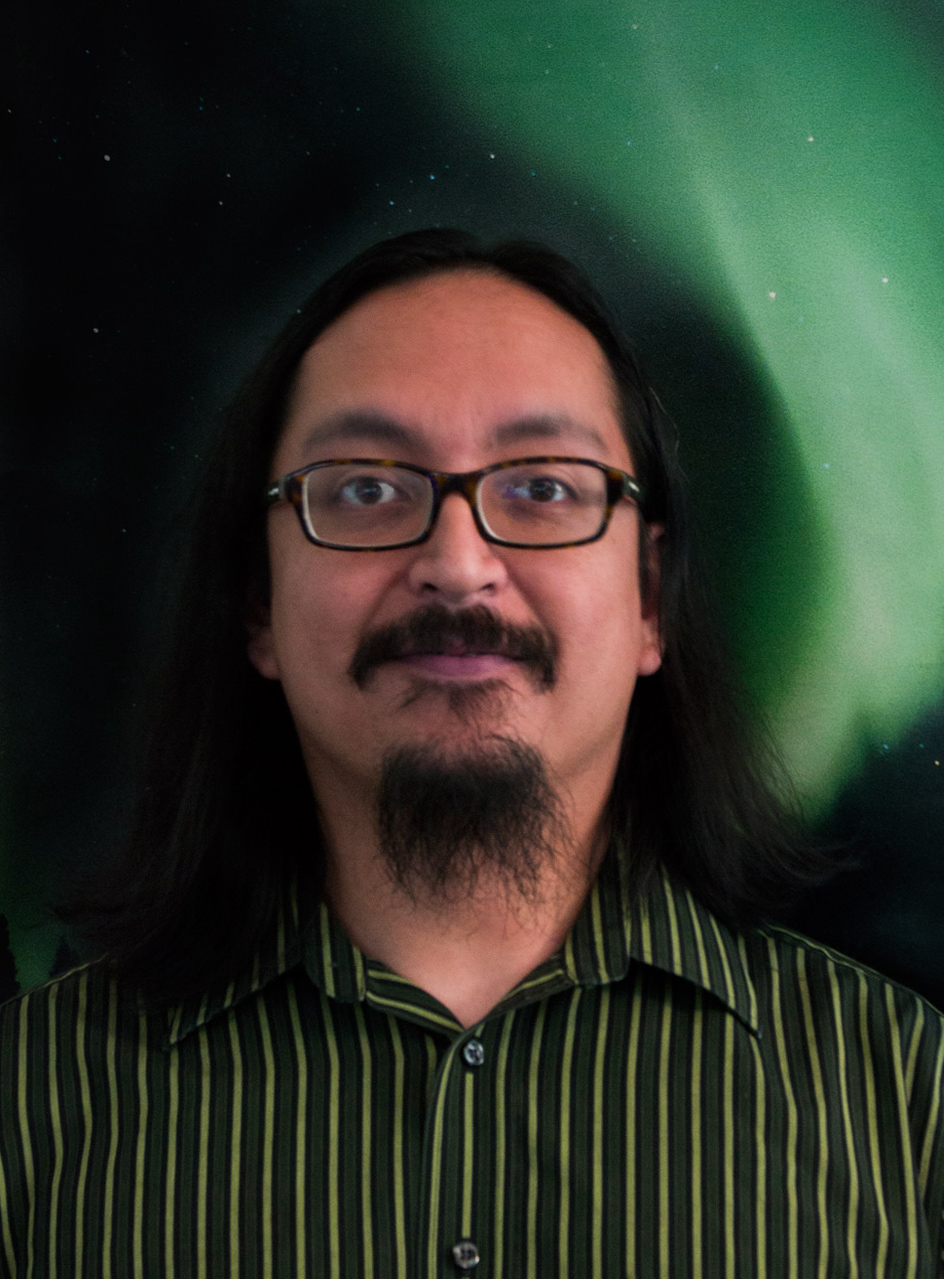
February 24, 2023
Learn how winds and storms from the sun create weather in space, and how it affects our daily lives, technology, and the future of space exploration. Discover how space weather can influence planetary habitability: creating water on the Moon and planets, and forming the molecules and conditions that could nurture life. Like extreme Earth-based weather, space weather can pose hazards to astronauts and space tourists, and can even disrupt our communications and electrical grid here on the ground. By studying space weather, we can better prepare and eventually predict its potential harms, as well as understand how stars interact with the planets and moons in their solar systems.
Emmanuel Masongsong has been a Program Manager with the Experimental Space Physics group in the UCLA Department of Earth, Planetary, and Space Sciences, since 2011. He coordinates several NASA satellite missions, manages lab facilities, and is passionate about science outreach, specifically increasing diversity and accessibility in STEM education. Having worked in viral genetics and cancer research for over a decade before his current role, he feels that studying any area of science can open doors and prepare you for almost any career. He is also a volunteer JPL Solar System Ambassador, presenting his team's work on space weather and Heliophysics at schools and events nationally, explaining the importance of Earth's magnetism and solar activity in our daily lives.
Katrina Carter-Journet
December 8, 2022
Dr. Jon Aurnou
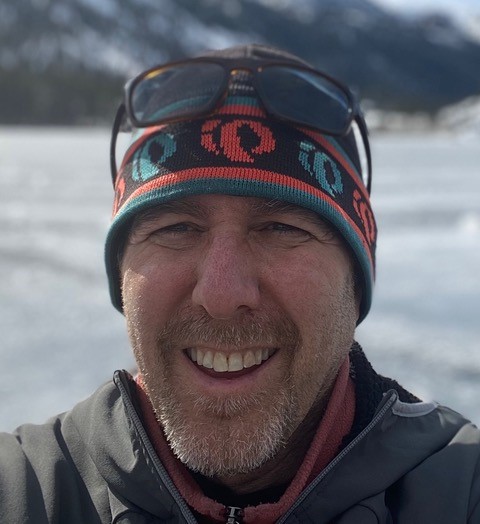
November 12, 2022
Jon Aurnou is a professor of geophysics and planetary physics in UCLA’s Department of Earth, Planetary and Space Sciences. There he studies large scale turbulence in deep planetary atmospheres, sub-surface oceans, and in liquid metal planetary cores. In addition, Aurnou is one of the co-founders of the DIYnamics Project that seeks to provide accessible hands-on tools for teaching core geoscientific concepts to learners at all levels.
In this talk, we will carry out a suite of live fluid dynamics demonstrations using DIYnamics hardware kits in order to better our understanding of the essentials flows observed in planetary atmospheres and oceans and which underlie a given planet’s climatic conditions. Using GoPros and cellphones, we will project images of our DIYnamics experiments onto the planetarium dome, providing an unheralded opportunity to connect laboratory scale models to their complementary planetary flows.
Dr. Jennifer Burt
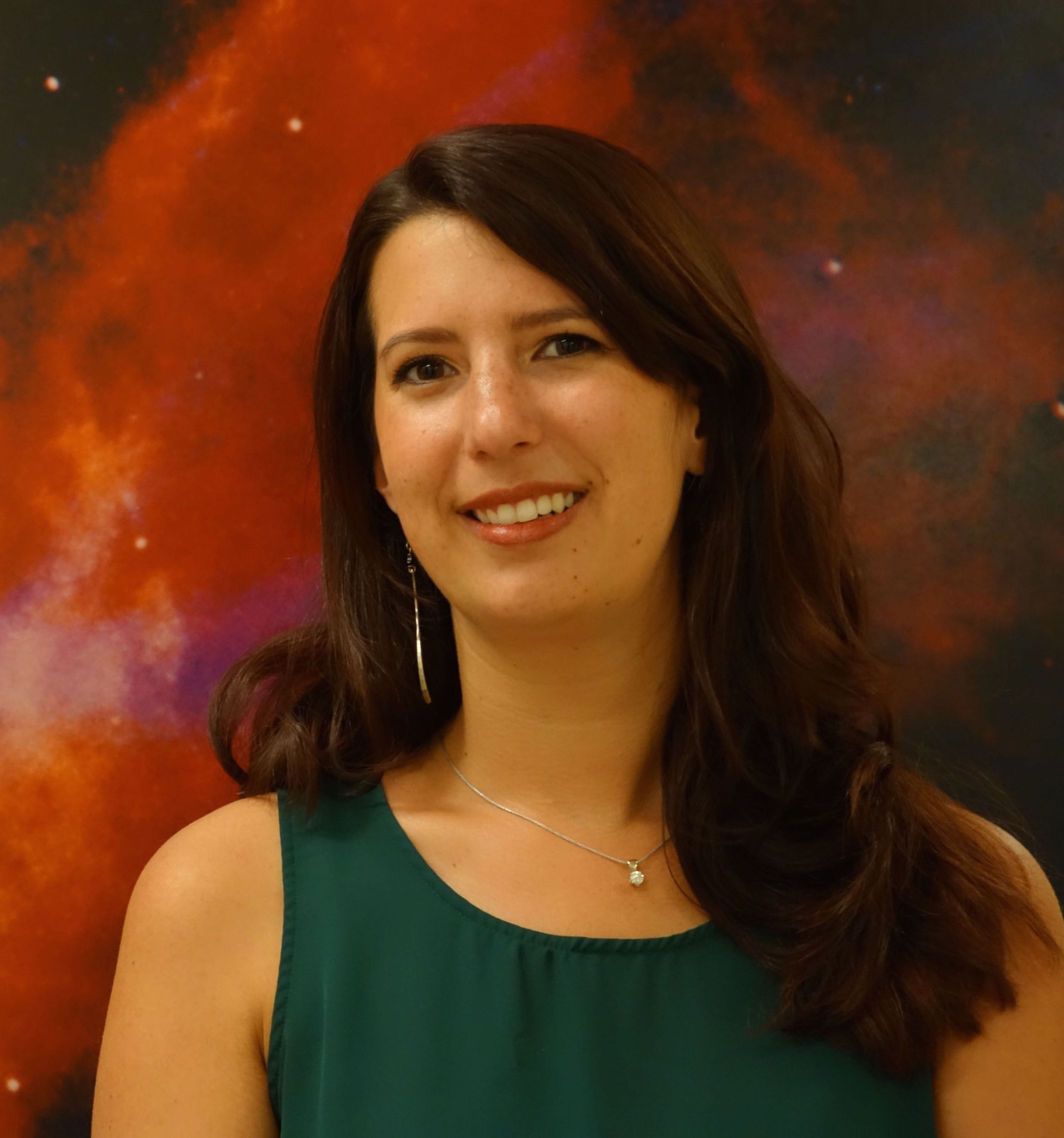
October 27th, 2022
Dr. Burt is a scientist at NASA's Jet Propulsion Laboratory where she focuses on the detection and characterization of small planets orbiting bright, nearby stars using telescopes around the globe. She now works inside NASA's Exoplanet Exploration Program Office at JPL to support the radial velocity community as we work towards the next big goal of detecting Earth-like planets orbiting in the habitable zones of Sun-like stars.
Dr. Burt's presentation will explore how the exoplanet landscape has evolved rapidly over the last 25 years, as we have moved from knowing about just a handful of planets orbiting outside our solar system in the late 1990s to now having more than 5000 confirmed exoplanets in 2022. She will discuss the recent advancements in both science and technology that are enabling the discovery and characterization of hundreds of small planets orbiting bright, nearby stars, as well as touch on the steps required to proceed from our current science capabilities to NASA's future goal of directly imaging Earth-analog planets, Earth-like planets orbiting in the Habitable Zone of Sun-like stars.
Dr. Abhimat Gautam
September 23, 2022
Dr. Gautam is a postdoctoral researcher at UCLA, studying the star population and the dynamical environment near the supermassive black hole in the Milky Way Galactic center. He uses observations collected with the Keck telescopes located on Maunakea in Hawaii and the Hubble Space Telescope to study the stellar populations at the Galactic center.
Dr. Gautam's presentation will discuss how to find the center of the Milky Way in the night sky and how astronomers observe the center of the galaxy with some of the most powerful telescopes on Earth. The Galactic Center is a unique and interesting environment and laboratory, filled with many recent and exciting discoveries, including the supermassive black hole which won the 2020 Nobel Prize in physics.